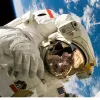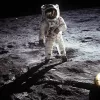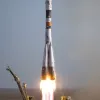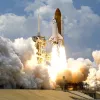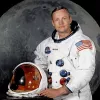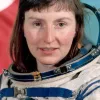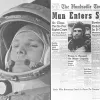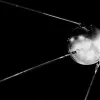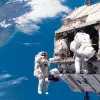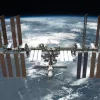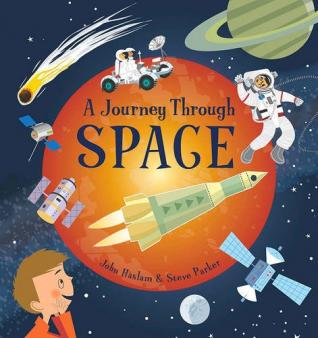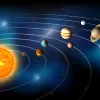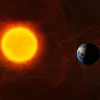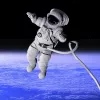Important update from TheSchoolRun
For the past 13 years, TheSchoolRun has been run by a small team of mums working from home, dedicated to providing quality educational resources to primary school parents. Unfortunately, rising supplier costs and falling revenue have made it impossible for us to continue operating, and we’ve had to make the difficult decision to close. The good news: We’ve arranged for another educational provider to take over many of our resources. These will be hosted on a new portal, where the content will be updated and expanded to support your child’s learning.
What this means for subscribers:
- Your subscription is still active, and for now, you can keep using the website as normal — just log in with your usual details to access all our articles and resources*.
- In a few months, all resources will move to the new portal. You’ll continue to have access there until your subscription ends. We’ll send you full details nearer the time.
- As a thank you for your support, we’ll also be sending you 16 primary school eBooks (worth £108.84) to download and keep.
A few changes to be aware of:
- The Learning Journey weekly email has ended, but your child’s plan will still be updated on your dashboard each Monday. Just log in to see the recommended worksheets.
- The 11+ weekly emails have now ended. We sent you all the remaining emails in the series at the end of March — please check your inbox (and spam folder) if you haven’t seen them. You can also follow the full programme here: 11+ Learning Journey.
If you have any questions, please contact us at [email protected]. Thank you for being part of our journey it’s been a privilege to support your family’s learning.
*If you need to reset your password, it will still work as usual. Please check your spam folder if the reset email doesn’t appear in your inbox.
Space exploration
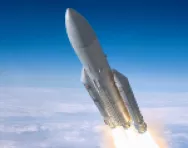
What is space exploration?
Space exploration is sending people or machines into space to visit other planets and objects in space. Mankind has dreamed of visiting the stars for hundreds of years, but it wasn’t until 1969 that the first person walked on the Moon.
Since the first person walked on the Moon, hundreds of satellites have been launched into orbit around the earth, and hundreds of people have been into space on lots of different types of spacecraft. We have also sent machines to investigate objects that are further away in the Solar System.
Top 10 facts
- The first person in space was Yuri Gagarin from the Soviet Union, who travelled into orbit around the Earth in 1961.
- The first man to walk on the Moon was an American called Neil Armstrong in 1969.
- The Moon is the only place in space apart from Earth that humans have set foot on.
- People who fly into space are called astronauts. They have to be very careful about what they eat and what exercise they do to stay healthy while they are in space.
- A spacecraft needs to travel at 11,000 miles per hour to get into orbit around the Earth.
- Spacecraft use huge rockets to carry them into space.
- The most famous type of spacecraft was the Space Shuttle. There were five Space Shuttles and one prototype – between them they flew 135 missions into space.
- Out of billions of people who live on Earth, only 535 have been into Orbit, and only 12 have ever walked on the Moon.
- The International Space Station is the biggest space station ever built. It can hold a crew of six people.
- In 2012 a machine made by NASA called ‘Curiosity’ landed on Mars to see if it could find evidence of any creatures or plants having ever lived there.
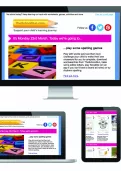
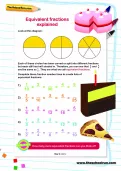
Boost Your Child's Learning Today!
- Start your child on a tailored learning programme
- Maths & English resources delivered each week to your dashboard
- Keep your child's learning on track
Did you know?
- Space starts 100 kilometres (62 miles) above the surface of the Earth.
- The first man to walk on the moon was Neil Armstrong. He was an American who travelled there in 1969 on NASA’s Apollo 11 mission. As he stepped onto the Moon he said, “That's one small step for man, one giant leap for mankind.”
- A satellite is what we call a machine that is launched into orbit around the Earth. Some satellites do things like taking photographs or broadcasting TV channels, and others are used by scientists.
- The first satellite was called Sputnik I and was launched by the Soviet Union in 1957. It circled the Earth for three months.
- When a space mission includes people, we call it a manned space expedition. When it only includes machines, we call it an unmanned expedition.
- Nobody has ever stepped on any object in space apart from the Moon, but we have sent machines to investigate Mars, Jupiter, Saturn and many other places.
- There is no air in space, so astronauts have to take air with them from Earth so that they can breathe. If they want to go outside their spacecraft, they have to wear special airtight clothes called a space suit.
- A space station is a place built in space so that astronauts can live and work in space.
- There is so little gravity in orbit around the Earth that instead of walking on the ground, astronauts in the space shuttles or on the International Space Station float in the air. This is called weightlessness.
- Astronauts have to exercise every day to keep their muscles strong while they are in space. They also have to eat specially prepared foods that are nutritious, easy to prepare and don’t make a mess when you eat them in space. Ice cream is too messy to eat in space so astronauts have to have it freeze-dried so that they can eat it for dessert!
Space gallery:
- An astronaut
- The Apollo 11 Moon landing
- The Soyuz space shuttle
- Buzz Aldrin walking on the Moon
- The launch of the Atlantis
- Neil Armstrong
- Helen Sharman was the first British astronaut
- Yuri Gargarin
- The Sputnik satellite
- The International Space Station
Gallery
About
Construction of the International Space Station by Europe, Japan, Canada, Russia and the USA started in 1998 and is still going on today. The International Space Station is the largest object that humans have ever put into orbit. It will be used by astronauts until at least the year 2020.
Space exploration doesn’t just mean sending people into space. We also send machines. Voyager I and Voyager II, launched in 1977, have almost reached the edge of the Solar System and will soon be exploring deep space. They have travelled further from Earth than any other space craft made by man.
Voyager I and Voyager II visited Jupiter, Saturn, Uranus, Neptune and Pluto on their journey through the Solar System.
Apart from the Moon, the most popular place to send unmanned space expeditions is to Mars. Since the year 2000, there have been 10 unmanned expeditions to Mars, including putting spacecraft into orbit around Mars and landing machines called rovers to explore the surface.
Some scientists think that creatures may have lived on Mars millions of years ago, when Mars was warmer and had more air – NASA sent the rover Curiosity to Mars in 2012 to look for evidence of life. They haven’t found it yet, but they are going to keep on looking!
Sending people to investigate Mars might take up to six months just to travel there. Even simple things like making sure that you have enough food to eat are difficult when you have to pack everything into your spacecraft before you leave. You can’t come back if you’ve forgotten something!
During the 1950s and 1960s there was a “Space Race” between the United States of America and the Soviet Union. Both countries thought it was important to be the first to do things in space and were very proud of their achievements. The Soviet Union put the first satellite and the first man into orbit, but the USA was the first to send a man to the Moon.
Now private companies are starting to fly into space too. Virgin Galactic sells tickets for a short trip into space for £130,000! Passengers won’t go high enough to go into orbit, but they will spend about six minutes in space. The whole trip will take two and a half hours from take-off to landing.
Words to know for space exploration:
Astronaut – a person who has travelled in space
Curiosity – a large rover sent to Mars by NASA to look for signs of life
ESA – the European Space Agency, which consists of all the countries in Europe working together on missions to explore space
NASA – the North American Space Agency, which is the organisation from the USA that explores and investigates space
Orbit – When something goes into orbit, it is high enough that it keeps circling the Earth, instead of falling back to the ground.
Rocket – Rockets burn a lot of fuel to get to very high speeds very quickly. You have to do this if you want to get from the surface of the Earth into orbit.
Rover – a mobile robot sent to land on another planet or moon and explore
Satellite – a machine put into orbit around the Earth, and often used for science or communications
Spacecraft – a vehicle for travelling in space or into space
Space Shuttle – Made by NASA, this is the most famous type of spacecraft to be made.
Space station – a permanent structure in space where astronauts can live and work
Spacesuit – special airtight clothes that keep an astronaut safe and warm outside their spacecraft
Sputnik – the first satellite to be put into orbit around Earth
Voyager I and Voyager II – spacecraft that were sent to explore the outer parts of the Solar System
Related Videos
Just for fun...
- Have an adventure on Mars and play games and try activities to find out about Mars exploration
- Answer questions about the scientific advancements that led to Apollo 11's successful mission to the Moon in CBBC's Moon Mayhem quiz
- Explore Mars with Nasa's Mars Rovers Game
- A spaceship craft activity to help you think about constructing a real spacecraft
- Learn some space-themed songs
- Use National Centre for Earth Observation resources to think about what Earth looks like from space
- Launch a virtual spacecraft and send it into orbit
- See the true size of space
- What would your age be on other planets?
- Make your own paper models of spacecrafts
Books about space exploration for kids
Names to know:
Buzz Aldrin (1930-2012) – He was the second man to walk on the Moon, and was from the USA.
Helen Sharman (1963-present) – She was the first person from Britain to travel into space.
John F Kennedy (1917-1963) – He was the President of the USA who started the space race and told NASA to send a man to the moon.
Neil Armstrong (1930-2012) – He was the first man to walk on the Moon, and was American.
Yuri Gagarin (1934-1968) – He was the first man to go into space, and was from the Soviet Union.
Find out more about space exploration:
- An interactive kids' guide to the International Space Station
- Watch an animated video about Neil Armstrong
- NASA: people and technology
- Join historian Greg Jenner for a BBC Sounds kids' homeschool history lesson on the space race
- Discover more about how NASA is searching for planets beyond our Solar System
- The European Space Agency's kids' zone about life beyond Earth
- The Hubble Space Telescope has changed the way scientists look at the universe
- Look through BBC Bitesize's guide to Neil Armstrong, with an animated video and a quiz
- Marvel at the wonders of space with clips from the BBC series, Little Stargazing (suitable for KS1)
- Discover the secrets and stories of Apollo 11, the first moon mission
- Watch lots of videos from the ESA, including British astronaut Tim Peake's spacewalk
- Expand your knowledge with some brilliant apps about space to use on a tablet computer or phone
- Read brilliant books for KS1 and KS2 about the moon landings and space exploration
See for yourself
- Visit the amazing gallery on space travel in the Science Museum in London.
- See more about human exploration of space at the National Space Centre in Leicester.
- Take a complete, 25-minute tour of the International Space Station with the Space Station Captain
- Might you be on one of Virgin Galactic's first trips to space?
